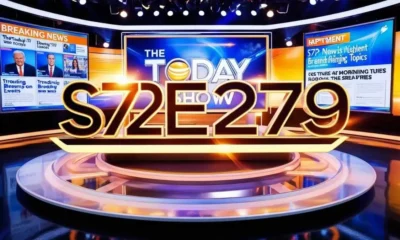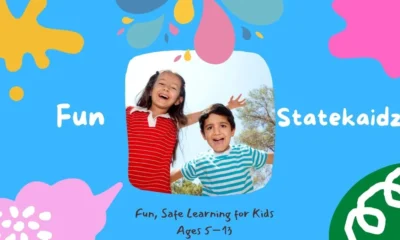BUSINESS
A Day on the Job: Managing Bulk DEF Like a Pro

6:02 AM — The sun has barely stretched over the horizon, but Ryan’s workday is already underway.
He’s the operations manager at a mid-size transportation hub in the Midwest, where diesel engines are the heartbeat of everything from long-haul trucks to off-road maintenance vehicles. Among his early-morning checks? The diesel exhaust fluid bulk tanks.
Ryan learned the hard way a few years back: DEF isn’t something you manage on autopilot. It’s as essential to operations as diesel fuel itself. If the supply dips too low—or worse, if it gets contaminated—everything grinds to a halt.
He walks to the control panel and checks the digital level sensor. Good. The tank’s sitting at 68%. Enough to cover the rest of the week, but he makes a mental note to confirm the next bulk def delivery is still on schedule.
6:47 AM — Daily Briefing
The drivers gather in the dispatch room, coffee cups in hand. Ryan scans the route assignments and vehicle numbers. He’s got seven trucks scheduled for outbound runs, all equipped with SCR systems that need DEF to stay compliant.
During his morning rundown, Ryan reminds the team: “Don’t top off if the tank’s full—overflowing DEF doesn’t just make a mess, it’s a waste.” A nod or two, some light grumbling. But they know he’s right. Mishandling DEF means extra cleanup and potential fines if the fluid ends up anywhere it shouldn’t.
He swings by the mechanics’ bay and checks with Dave, their head technician. “Any issues with the dosing systems?”
“Not today,” Dave replies, flipping through his checklist. “System diagnostics ran clean. DEF injectors on all active units are within range.”
Ryan exhales. That’s one less problem to worry about.
9:22 AM — A Problem Arises
Trouble doesn’t wait for an invitation. A call comes in from the yard: a fueling technician can’t get DEF to dispense at Pump 4. Ryan walks over with a handheld tablet and checks the system log.
Pressure looks low. Could be a blockage, or maybe the nozzle seal’s damaged again. He traces the hose to the junction valve and spots the culprit—grime buildup in the filter housing.
It’s always the little things.
He logs the incident, grabs a clean replacement from inventory, and resets the pressure sensor. Within 15 minutes, the system is back online.
It’s a minor delay, but one that reinforces a key truth: managing a diesel exhaust fluid bulk system isn’t just about refills—it’s about the daily decisions that protect long-term reliability.
11:03 AM — Email Ping: Delivery ETA Update
Back at his desk, Ryan sees the DEF supplier has sent an automated ETA for the upcoming bulk delivery. Wednesday, 7:00 AM, right on schedule.
He appreciates the predictability. A few years back, they switched to a supplier—exhaustfluid.com—that offered automated inventory tracking and flexible bulk diesel exhaust fluid delivery windows.
It’s saved him countless headaches. No more guessing when the truck will show up, no more emergency reorders. The DEF shows up when they need it, and the quality is consistent every time.
He clicks “confirm delivery” and checks it off the list.
1:15 PM — Lunch and Logistics
Even lunch breaks come with logistics. Ryan reviews the upcoming equipment rotation and notices two new trucks are being added to the roster next month. Both run newer engines with higher DEF consumption.
He pulls up his monthly usage report and starts forecasting.
If current usage trends hold, he’ll need to increase DEF storage capacity by at least 15% to avoid dipping below the reorder threshold. He flags the tank vendor and requests specs on a modular expansion unit that can link with their existing system.
He makes a note to train the new drivers on proper DEF handling. Last year, one rookie mistakenly filled a DEF tank with windshield washer fluid. The cleanup and injector repairs weren’t cheap.
3:42 PM — Audit Time
A routine inspection is underway. Environmental compliance officers arrive for a surprise spot check. They’re reviewing DEF storage, delivery records, and quality documentation.
Ryan walks them through everything. He shows the sealed DEF dispensing cabinet, the temperature-controlled storage enclosure, and the logs showing consistent urea concentration testing.
“Everything looks great,” the lead inspector says. “You’re well within all compliance ranges.”
Ryan nods, relieved. But he also knows it’s not luck—it’s the system they’ve built and the diligence of everyone on the team.
5:10 PM — The Closeout
The day begins to wind down, but the checklist never really ends. Ryan logs into the system dashboard and runs one last scan of the DEF monitoring data: tank levels, usage by vehicle, and alerts. No red flags.
Before he locks up, he takes a short walk across the yard. As the light fades, the rows of trucks sit ready for tomorrow. The tanks are full. The systems are clean. The DEF is where it should be.
It might not be glamorous, but it’s a job that keeps everything running.
Final Thoughts
Bulk diesel exhaust fluid management isn’t about waiting for things to break—it’s about staying three steps ahead. Every refill, every pump, every sensor plays a role in ensuring that engines meet emissions standards and fleets stay on schedule.
Ryan’s story isn’t unusual. It’s a reflection of how operations managers across the country are adapting to the demands of modern emissions systems, cleaner technologies, and tighter margins.
From organizing timely bulk def delivery to maintaining clean, temperature-stable storage, every detail matters. And when it’s done right, it becomes almost invisible—just another part of a well-oiled machine.
For managers tasked with keeping their sites running without surprises, dependable supply, good systems, and attention to detail are the ultimate tools. DEF may not make the headlines, but without it, nothing moves.
-

 BIOGRAPHY7 months ago
BIOGRAPHY7 months agoBehind the Scenes with Sandra Orlow: An Exclusive Interview
-

 HOME1 year ago
HOME1 year agoDiscovering Insights: A Deep Dive into the //vital-mag.net blog
-

 HOME1 year ago
HOME1 year agoSifangds in Action: Real-Life Applications and Success Stories
-

 BIOGRAPHY1 year ago
BIOGRAPHY1 year agoThe Woman Behind the Comedian: Meet Andrew Santino Wife




























